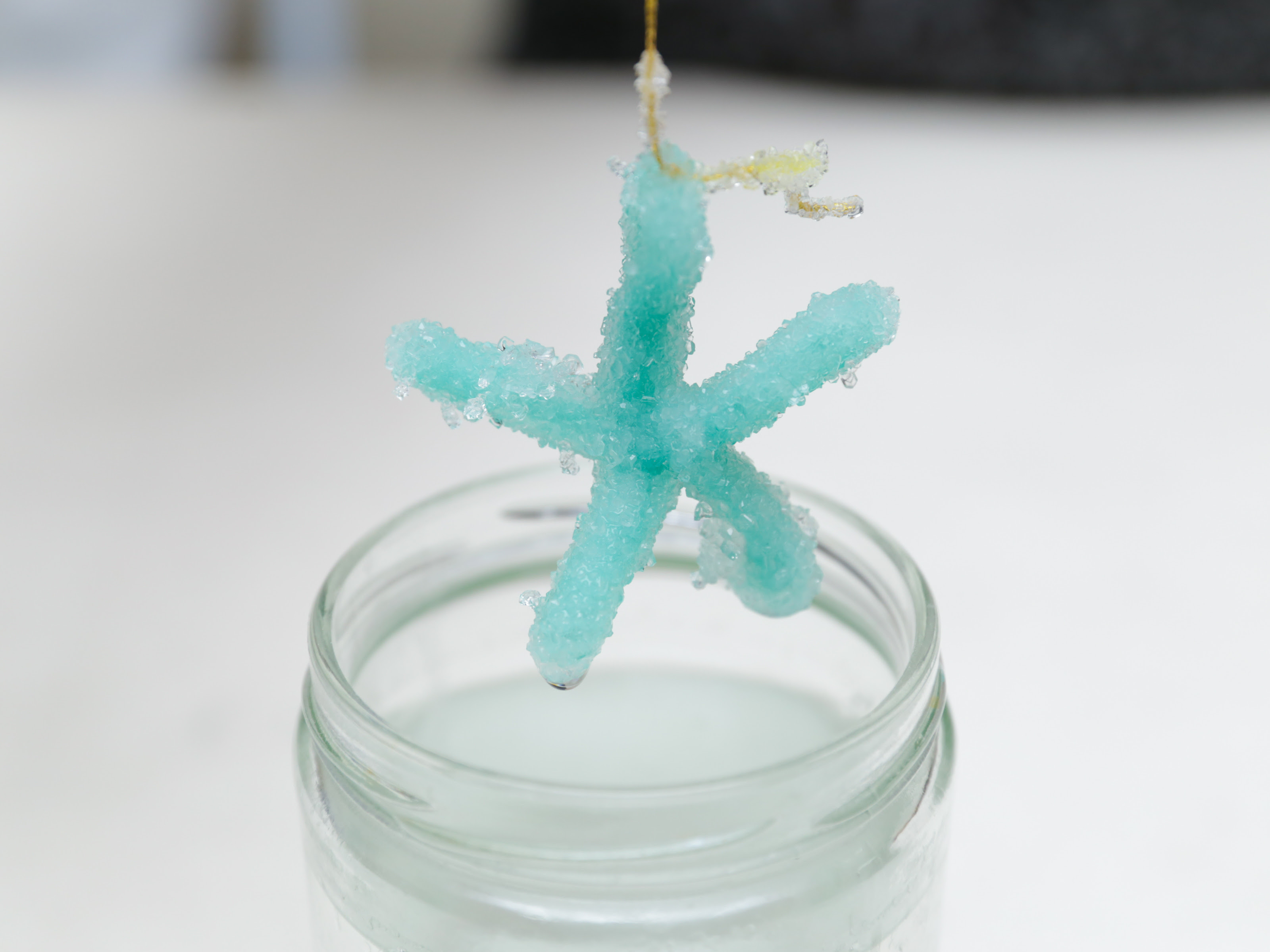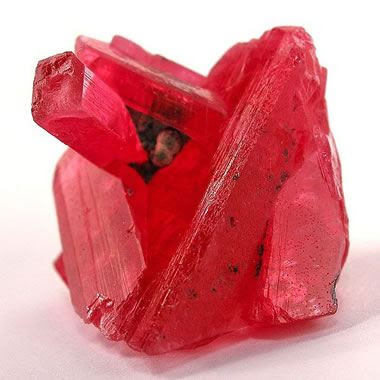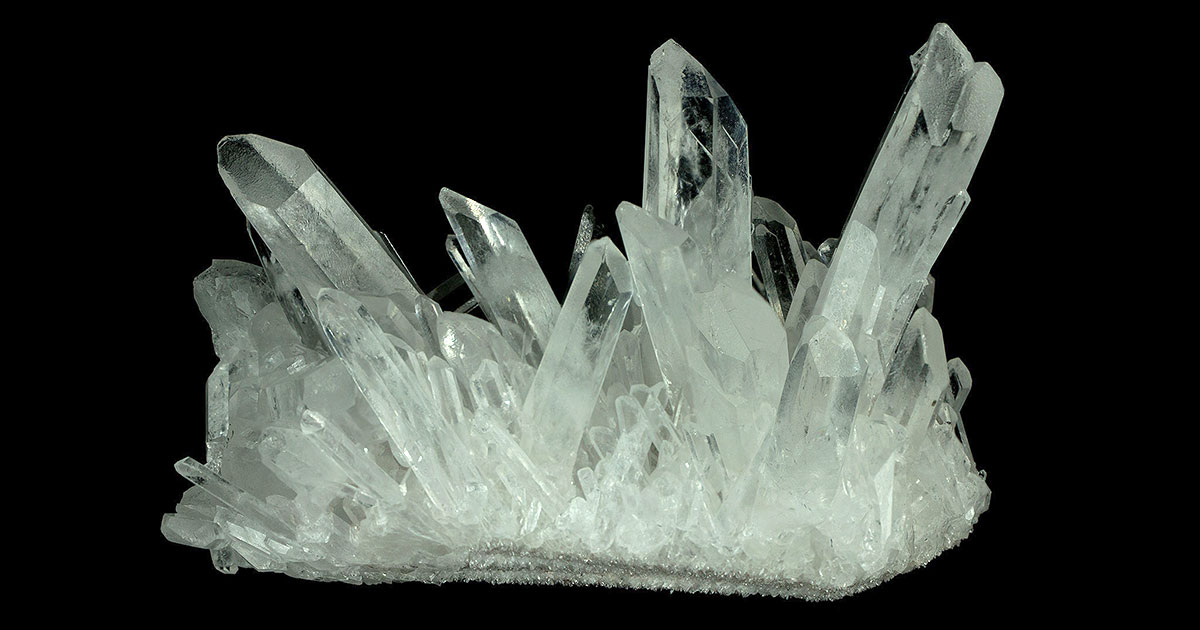Aim: To learn about a saturated solution and how to make crystals
Definition of solution:
A liquid mixture, when something is dissolved into a liquid (eg: sugar in water)
| Borax Crystals |
Having or holding as much as can be absorbed of something (when no more sugar or borax can be dissolved into the water)
In groups of three, you will make three different types of crystals and compare the results.

Ratio; 3 Tablespoons Borax per 1/2 cup water
Materials
1)Cup
2)Borax
3)Popsicle Sticks
4)warm water
5) pipe cleaners
Process
Step 1: Get a cup and put three tablespoons of borax
Step 2: put warm water in the cup and take a stick and stir it until it looks like a solution
Step 3: wait for a while and keep an eye on it
Step 4: after a while stir it again and if it feels like there is still mush that normal
Step 5: stir for a while if it just feels thick stir faster but try not to spill it
Step 6: once you think you've stirred enough stop and let it rest and keep an eye on it
Step 6: once you think you've stirred enough stop and let it rest and keep an eye on it
Sugar Crystals
Materials
1)Cup
2)Sugar
3)Popsicle Stick
4)Warm water
5)String
Process
Step 1: take your cup and add sugar until it is halfway full
Step 2: Put the warm water in and start to stir
Step 3: stop stirring and wait for awhile keep eye on it
Step 4: stir it once again and do it fast not to fast that you spill it
Step 5: wait for 5 minutes
Step 6: stir it until it becomes a yellow see-through liquid

Ratio: 4 Tablespoons salt to 1/2 cup water
Materials
1)Salt
2)Popsicle sticks
3)Cup
4)Warm water
5)String
Process
Step 1: take your cup and add four tablespoons of salt
Step 2: Put the warm water in and stir for a while
Step 3: wait for 5 minutes
Step 4: stir fast and keep an eye on the color
Step 5: after the wait and you see there is water at the top and salt at the bottom and you can see the separation that is normal
Step 6:stir for 10 minutes then wait for 5 minutes
Findings
Describe your crystals in the table below.
Crystal Type
|
Shape
(Describe the shape) |
Size
(of individual crystals) |
Hardness
(Crumbly to Rock Hard) |
Borax
| Cubic | Small, Medium | Hard |
Sugar
| Trigonal, cubic | ||
Salt
|
What crystals worked out best and why?:
Conclusion:
______________________________
Conclusion:
______________________________
After watching the videos as a class, explain how the following crystals are formed:
Type
|
Explanation
|
Salt
|
people take the water from the ocean and put it into a pond,so when it's a hot hot day the water will evaporate and all that will be left is the crystals
|
Sugar
|
people take cups and water then they add sugar to it until it goes a clear-ish yellow and they take a stick and put a string on it and puts in sugar then puts it in the water and they wait a few days to see what happens
|
Snowflakes
|
snowflakes are made from clouds because clouds have crystals in them and thats how rain and snowflakes are made the crystals are made from water
|
CRYSTAL TYPES
AIM: TO LOOK AT THE 7 DIFFERENT TYPES OF CRYSTALS
| Salt Crystals |
 |
| Sugar Crystals |
| Borax Crystals |
7 different crystal shapes
The 7 types of crystals
Type
|
Number of sides
|
2 examples
|
Image
|
Triclinic
| 7 | Turquoise Rhodonite |  |
Monoclinic
| 8 | orthorhombic |  |
Orthorhombic
| 6 | olivine | |
Trigonal
| 9 | albite | |
Hexagonal
| 8 | Quartz, |  |
Cubic
| 6 | pyrite, |  |
Tetragonal
| 12 | rhodonite . gypsum |  |

